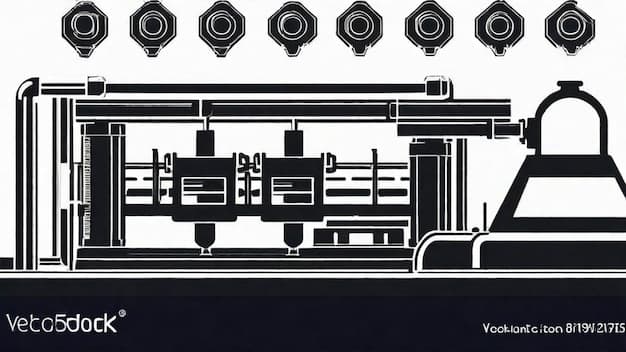Content Types Explored: In this article, readers can expect an in-depth exploration of SMT Automated Optical Inspection (AOI) methods, the significance of PCB quality assurance, discussions on different types of AOI systems, insights into their integral roles in manufacturing, and a closer look at future trends in this critical domain.
The growing complexity of electronics and the miniaturization of components have rendered traditional inspection processes inadequate. As the industry pivots towards greater precision, Automated Optical Inspection (AOI) emerges as a pathfinder, ensuring that Printed Circuit Boards (PCBs) meet rigorous quality standards. This high-tech inspection process employs sophisticated cameras and advanced imaging algorithms to detect defects that may elude human eyes. By incorporating AOI into Surface Mount Technology (SMT) production lines, manufacturers not only safeguard their products' integrity but also enhance operational efficiency.
At its core, AOI is a non-contact technique that scrutinizes solder joints, component placements, and other critical attributes of PCBs. The technology has revolutionized the production line, enabling manufacturers to detect defects in real-time—prior to the assembly process being completed. This rapid feedback loop drastically reduces the likelihood of defective units reaching the consumer market, which can result in costly recalls and damage to brand reputation. The impact of implementing AOI cannot be overstated; it serves as a sentinel guarding the quality of electronic components.
There are various types of AOI systems, each catered to different aspects of PCB inspection. The first category is the 2D AOI system, which captures images of the PCB from a straightforward top-down perspective. While immensely effective in identifying surface-mounted components and solder joints, this simple dimensional analysis has its limitations. For instance, it may struggle with inspecting hidden pads or components obscured by overhanging parts. Nevertheless, this system remains prevalent due to its cost-effectiveness and ease of implementation.
Conversely, the 3D AOI system introduces a new dimension of complexity and accuracy. By utilizing multiple angles and sophisticated algorithms, 3D AOI can unveil intricate faults often missed by traditional methods. This system is particularly adept at examining the height of solder joints and the coplanarity of components—a critical factor in ensuring optimal electrical connectivity. The depth of analysis provided by 3D systems has positioned them as a premium solution for high-stakes industries, where even the minutest defect can have significant ramifications.
Moreover, the advent of Hybrid AOI systems merges the advantages of both 2D and 3D technology. These systems provide a comprehensive inspection apparatus that utilizes high-resolution imaging techniques alongside depth profiling. This synthesis allows for the detailed evaluation of complex assemblies. Hybrid AOI systems are becoming increasingly popular in high-reliability environments, such as aerospace and medical device manufacturing, where each component's performance is critical to overall functionality and safety.
An essential aspect of automated inspection is its integration into the broader manufacturing ecosystem. Modern AOI systems often interface with automated production lines, ingesting data on material usage and product yields. This interoperability enables manufacturers to streamlining processes, thereby fostering continuous improvement. Furthermore, the comprehensive data collected by AOI systems can serve as a potent analytic tool, driving decisions that enhance product design and production methodologies in the future.
Empirical studies illustrate that incorporating AOI systems in SMT significantly reduces production costs. Since AOI identifies defects early in the assembly process, the costs tied to rework, repair, or scrapped products are minimized. Additionally, enhanced detection capabilities instill a sense of confidence in manufacturers, leading them to explore more advanced techniques and diminish reliance on labor-intensive inspection methods.
However, despite the myriad benefits, the adoption of AOI technology is not without challenges. The initial investment can be substantial, particularly for small to medium enterprises. Additionally, the calibration and installation of AOI systems require skilled personnel to set up and maintain the technology effectively. Without appropriate training, operation can lead to misdiagnosis of defects or, conversely, undetected failures, which diminishes the technology's purpose.
Looking forward, the future of SMT Automated Optical Inspection is decorated with advancements in machine learning and artificial intelligence. These technologies are poised to enhance the efficiency of AOI systems by enabling them to learn from their inspection results, thus improving defect detection algorithms over time. This evolution may further diminish false positives and refine the precision of inspections, cementing AOI as an unparalleled force in PCB quality assurance.
In conclusion, SMT Automated Optical Inspection represents a pivotal advancement in the quest for PCB quality. From basic 2D systems to sophisticated 3D and Hybrid technologies, AOI is integral at different junctures of the manufacturing process. Its ability to preemptively identify manufacturing faults ensures that products meet the stringent quality standards expected by modern consumers. While the challenges of implementation and operational costs remain, the trajectory of AOI's evolution points towards a future rich in possibilities, promising enhanced precision, efficiency, and reliability in the electronic components market.





















Responses (0 )